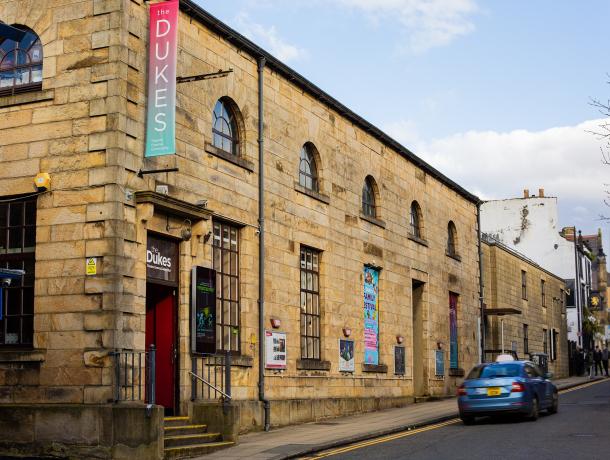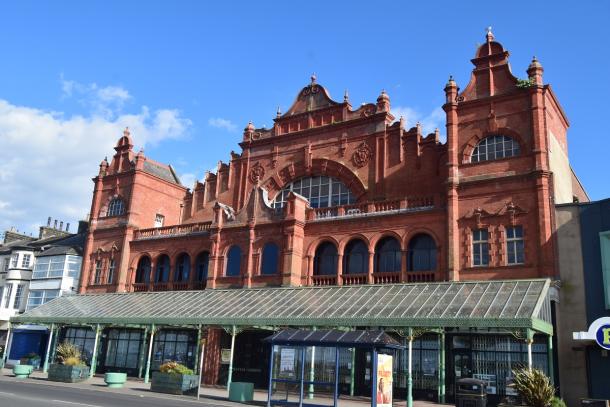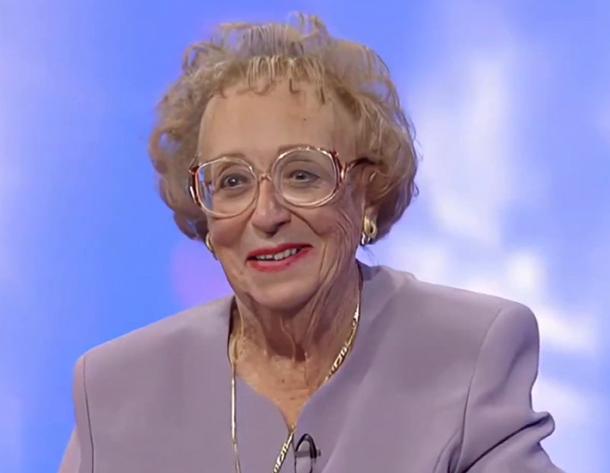Curtain Up On The District's Theatrical Heritage!
All the world’s a stage but did you know that
Lancaster and Morecambe have played their
important roles in theatrical history too?
Not only is the district home to one of the country’s oldest theatres but it’s also the birthplace of some of the nation’s most beloved performers. Its theatrical heritage goes back to 1782 when Lancaster’s first theatre was built and on that same St Leonardsgate site, more than 240 years later, stands the Grand Theatre rebuilt in 1908 after the original building was gutted by fire. Guided tours now tell the fascinating story of a place where everyone from Charles Dickens to Grimaldi trod the boards.
Built in more modern times, are Lancaster’s two other theatres, the Nuffield based on Lancaster University’s campus, and The Dukes in Moor Lane. Opened in 1968 as one of the UK’s largest black box theatres, the Nuffield is known for staging experimental theatre, contemporary dance and live art. Just three years later, and largely in response to Lancaster becoming a university city, the award-winning Dukes theatre was converted from St Anne’s Church. Lancashire’s only professional building-based producing theatre cultivated the early careers of many actors including Dame Harriet Walter and Miranda Richardson. The Dukes also played an important role in the career of Andy Serkis, most famous for playing Gollum in the Lord of the Rings films, and who appeared in the theatre’s first outdoor walkabout production in Williamson Park in 1987, a summer tradition which continues today.

And when it came to summer entertainment in years past, Morecambe was the place to be, boasting two piers and several theatres though only the Winter Gardens and Alhambra still exist. Having opened in 1897, the Winter Gardens went on to attract the biggest stars of the day including George Formby, Vera Lynn and the Rolling Stones. After closing in 1977, the theatre fell silent but thanks largely to the efforts of volunteers, the Winter Gardens now holds regular events and provides tours of the historic building.
Along with the Winter Gardens, the Alhambra, now a live music venue, found big screen fame when it was a location for the 1960 film of The Entertainer based on the play originally written by John Osborne. Five years before, Osborne had penned Look Back In Anger, part of which he wrote on Morecambe’s Central Pier while acting in a play there. The Entertainer starred Sir Laurence Olivier, who was Oscar-nominated for the role but Sir Laurence isn’t the only famous ‘entertainer’ to be associated with Morecambe, step forward Eric Bartholomew, the comedian whose stage name honoured his birthplace.
May 14, 2026 will see the centenary of Eric’s Morecambe’s birth in Buxton Street. The family later moved to Christie Avenue and he was educated at Lancaster Road and Euston Road (now Morecambe Bay) Schools. After honing his talent at local venues, Eric successfully auditioned for impresario Jack Hylton whose archive is held at Lancaster University. Eric met Ernie Wiseman on tour and they first performed as a double act in 1941. The rest is showbusiness history. Fifteen years after Eric’s death, Queen Elizabeth II unveiled a statue to him on Morecambe Promenade which has since become a place of pilgrimage for comedy fans.

One of those fans – Victoria Wood – went on to star as Eric’s mum, Sadie, in the television drama, Eric and Ernie. Victoria herself had spent years living in Morecambe’s Oxford Street during her early career after arriving with Geoffrey Durham, who as ‘The Great Soprendo’ appeared at the Central Pier in 1977. The couple married at Lancaster Register Office in 1980 and soon after, Victoria wrote her first play – Talent – starring Julie Walters who also appeared in one of Victoria’s most well known sketches – Two Soups – thought to be based on a Morecambe café they both frequented. Another of Victoria’s television plays – Pat and Margaret – also featured Sandgrown star, Dame Thora Hird.
Born on May 28, 1911, Thora made her first stage appearance as a baby at Morecambe’s Royalty Theatre, which was managed by her father. She later joined Morecambe Repertory Theatre and appeared on the London stage in 1940. Thora had left Morecambe by the time she became a major character actress, appearing in many films, including The Entertainer and, most notably, A Kind of Loving in 1962. During the Sixties she also began a television career which included Last of the Summer Wine, In Loving Memory and Praise Be. Thora’s long career was crowned with two BAFTA winning performances in the Talking Heads monologues A Cream Cracker Under The Settee and Waiting For The Telegram, both penned by Alan Bennett. Having spent many childhood holidays in Morecambe, the acclaimed playwright also took the seaside town as his inspiration for two television dramas – Sunset Across The Bay and All Day On The Sands.














